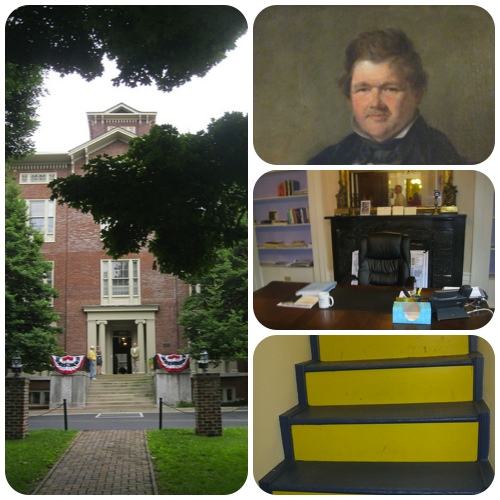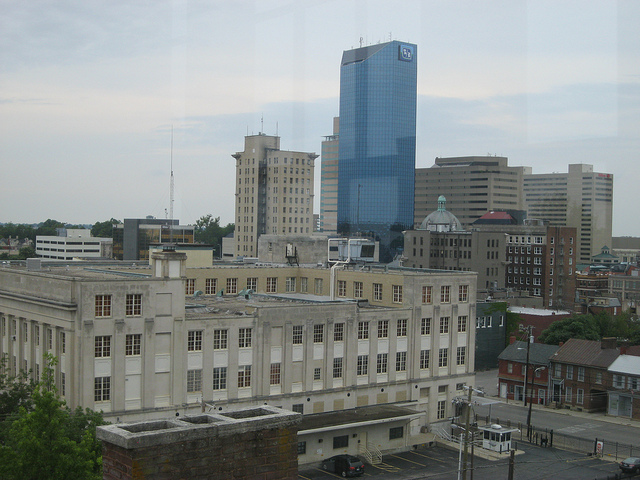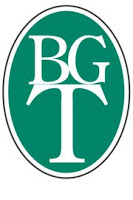 |
| Sayre School – Lexington, Ky. (R: David A. Sayre, headmaster’s office, Spartans colored stairs) |
David A. Sayre was a wealth silversmith from New Jersey who arrived in Lexington in 1811. By the end of the following decade, he had completely abandoned the trade in favor of commercial banking which had become a staple of the economy. With success, he quickly became one of Lexington’s most affluent denizens.
With his success, he contributed greatly to a number of philanthropic efforts. On November 1, 1854, Sayre founded the Transylvania Female Academy. Within a year, the school was renamed for its founder and benefactor as the Sayre Female Institute. The school began to admit boys in 1876 and finally dropping the gender-specific name in 1942.
During almost this entire history, Sayre School has operated at the same location: 194 North Limestone, now affectionately referred to as “Old Sayre.” (That brief interim as the Transylvania Female Academy found the school seated at the northwest corner of Church and Mill Streets.)
Old Sayre was constructed in 1846 as a two story, three-bay Greek Revival designed by local architect Thomas Lewinski as the home of Edward P. Johnson. Johnson lived here until 1855 when he sold the property to Sayre. By the end of the decade, two additional floors had been added to Old Sayre with the alterations being designed by architect John McMurtry.
 |
| View of downtown Lexington from atop the cupola of Old Sayre. |
With the alterations, Old Sayre has assumed features of the Italianate style. On all four floors, the windows in the three bays are triple-section with the garret’s central window featuring a palladium window. Leading up to Old Sayre’s central architectural feature are a narrow set of stairs painted yellow and blue – the school colors. That signature feature is the square cupola topping Old Sayre, also having three windows on each side.
Given Sayre’s location just north of the downtown commercial district, the cupola offers sweeping views of downtown.
The property is seated on what was once Outlot No. 11 in the earliest of Lexington’s plans laid out in 1791. On this five acre tract and in the footprint of Old Sayre, Colonel George Nicholas constructed his home. Nicholas was, among other accolades and accomplishments, a prominent lawyer, Revolutionary War veteran, father of Kentucky’s Constitution, and the first attorney general of Kentucky. (Read more about Col. Nicholas here.)
Nicholas died in 1799 and is buried in the Old Episcopal Burying Grounds, the property was sold in 1806 to Thomas Hart, Jr. “who had a rope walk on the rear of the property.” (It is questionable whether the rope walk would today be considered an amusement ride and not permitted under present zoning law.) Hart’s family sold the land to Johnson who demolished the Nicholas home in favor of the two-story, supra.
David Sayre sought the formation of the school to provide an education of the “widest range and highest order.” Having survived through both the Civil War and the Great Depression, Sayre continues to provide such an education to her pupils.
Additional photos of the Sayre School deTour are available on flickr.
Sources: Lexington: Heart of the Bluegrass; NRHP; Sayre School

The Blue Grass Trust for Historic Preservation hosts a monthly deTour for young professionals (and the young-at-heart). The group meets on the first Wednesday of each month at 5:30 p.m. Learn more details about this exciting group on Facebook! You can also see Kaintuckeean write-ups on previous deTours by clicking here.
